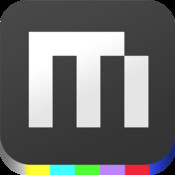Podcast: Play in new window | Embed
Tech News & Commentary
Rachel from Hahnville, Louisiana asked: “My nephew is going to the 7th grade and are required to have a tablet for school. We are trying to find the best for him for about $199.”
Well Rachel, the Kindle Fire HD is one of the best for your price range, it has a lot of apps, free and available for purchase. You can browse the web, stream media such as films and TV shows, although not to be used during school! You can find productivity apps such as “Schedule Planner” and “Notepad”, both free apps that make it easier to organise and create content.
It features a 7 inch IPS touch display with a resolution of 1280 by 800 pixels and has an anti-glare coating, it runs Amazon’s flavor of android, making the system easy to use and responsive.
The Kindle fire HD runs various video, document and audio formats for up to 11 hours, has USB 2.0, micro-HDMI and a headphone port to store, and play content from the 16GB of internal storage.
The Kindle fire HD can be found on Amazon for just under $200
Make sure you do a little research into the textbooks the school requires. Some of them are extremely big files and it may be necessary to get a 32gig Kindle Fire HD which will set you back about another $30. Some schools that are requiring students to get tablets are also requiring something that can handle 64gigs, like the iPad, because the books must be stored on the device as opposed to using cloud storage.
If you don’t want to find yourself immersed in the Amazon.com world of apps and media content, you should take a close look at the Google Nexus 7 tablet. It starts at $229, which is close to your price range, and has excellent hardware and a stock Android operating system, which assures you access to the broadest possible range of apps and media content. There’s no doubt that the Kindle Fire HD is a very good tablet also, and if you’re comparing media it might even be better than the Nexus. But with the Kindle Fire HD you are locked in to Amazon’s app store, and the Google Play store simply has far more apps.
Consumer Reports Feature With Jim Willcox
Samsung last week announced that its 55-inch Curved OLED TV would finally hit stores in the U.S. market, and at a cheaper-than-expected price $9,000. Consumer Reports has already had a chance to evaluate it in their labs. Senior Editor Jim Willcox is here to tell us how it performed.
The “Into Tomorrow” team discussed the latest apps that they have been playing with recently.
• Mark recommends: YouTube, FREE

- “This week, I’m all about the YouTube. The new YouTube 2.0 app is out for iOS, and I’m loving it on both my iPad and my iPhone. Let me share a few of my favorite things about the new version. First, there’s orientation. That’s right, iPad users! YouTube finally knows how to browse videos in landscape orientation. It always PLAYED them that way, but you had to use the app in portrait mode. Ick! Second, the 2.0 version has something I’ve wanted for a long while. A “Play All” button when displaying a playlist. Finally I don’t have to use third party apps to be able to start a YouTube playlist going, and just sit back and watch. If you haven’t yet updated this FREE app, run…do not walk to your App Store icon and select Updates.” — Mark
• Marly recommends: MIXBIT, FREE

- “When the co-founders of youtube create a video app, you download it immediately and figure it out later!!! MIXBIT is my fav app this week and it’s the newest app in the flurry of social media video apps. You heard it on Into Tomorrow first folks …. From socialcam, to viddy, to vine and now instagram, mixbit challenges them all with it’s slick interface and editing capabilities. No longer are we forced to get perfect “one-takes” and cuts on the videos we post. Mixbit lets users import video and pictures from their libraries, shoot on the fly and edit them onthe spot or later. Videos can be from 1 second to 1 hour with up to 256 seperate clips that could be rearranged as desired and played seamlessly. If you’re working on a larger Project, it can be stored and finished later as well as published directly from your mobile device. Pretty cool, wouldn’t you say??? It’s available for FREE on all iOS devices but no worries Android users … your turn will come soon.” — Marly
• Chris recommends: Duck Dynasty Beard Booth, FREE

- “One of the hottest shows on TV right now is Duck Dynasty. My wife and I don’t miss an episode. So you can imagine my excitement when I came across an app called
Duck Dynasty Beard Booth
- . Now you can have one of the signature beards without actually waiting for it to grow. Snap a picture of yourself or one of your friends, pick your beard, adjust the size and position and voila! You’re ready to go duck hunting in the swamps. You can add multiple beards to a picture so that if you have a group shot, nobody will feel like a beardless yuppie. You can share the bearded shots via e-mail, text, Facebook, Twitter, Timblr or Instagram. Duck Dynasty Beard Booth is free.”
- — Chris

What are your favorite Apps? Let us know at 800-899-INTO and we’ll feature them in this segment!
- Tune in to Hour 1 of our podcast for more details
Guest Segment:
Jim Hunt, Senior Vice President – GENCO
Paul in Scottsville, Kentucky calling in from the app asks us: “I have wifi in my home and was wondering how I can limit my kids from getting on the internet after a certain time, thank you.”
Paul, check into the routers content filtering settings and look for a Block Services tab or option. From this menu you should be able to set the router to block specific ip addresses during specific times.
If your router does not have this option you may want to get one that does. The Netgear WNR2000 Wireless Router is a good choice, it allows this type of blocking and retails for under $50
Just keep in mind that if you’re going to block specific IP addresses during specific times of the day or night, you’ll need to assign static IP addresses to the devices using your wireless network. You’ll need to assign addresses that are outside of the range of addresses given out dynamically by the router’s DHCP function.
You might be better off focusing on a router with Parental Controls. These are typically easier to use and set up than the more tech-heavy filters and rules in routers not designed for family use. Most manufacturers, like Netgear and Linksys, offer routers that have Parental Controls. With Linksys, you’ll want to look for the “SMART Wi-Fi” label, as that’s what they call routers with these features built in. Another interesting choice would be the iBoss router. It sells for $50 and offers category based filtering tools, to help keep your kids safe online. Some users have reported it to be quite slow, however, so you should consider that before purchasing.
Regardless of what sort of device you use to limit Internet access, you should combine that with using the OpenDNS service, which is free for personal or family use, to protect your children against phishing sites and other objectionable content when they ARE online. OpenDNS lets you specify what kinds of sites, or which SPECIFIC sites to filter out. A tech-savvy teenager can get around it, if they know how to change their IP settings to use a different DNS, but you can get tricky in the router, and send all DNS requests to the OpenDNS address, no matter WHAT the kids have entered in their devices.
It’s a bit of an arms race, sometimes. Good luck!
For more information tune in to Hour 1 of our podcast.
This Week’s Prizes for Our Listeners
Akitio:Neutrino Thunder Duo – 2-bay Thunderbolt Hard Drive enclosure
V Moda Headphones: a variety of styles of the DJ Inspired, Hollywood Designed Headphones
Ventev: An assortment of tangle-free USB cables and battery cases for iPhones

